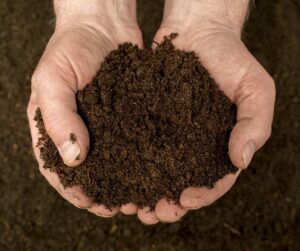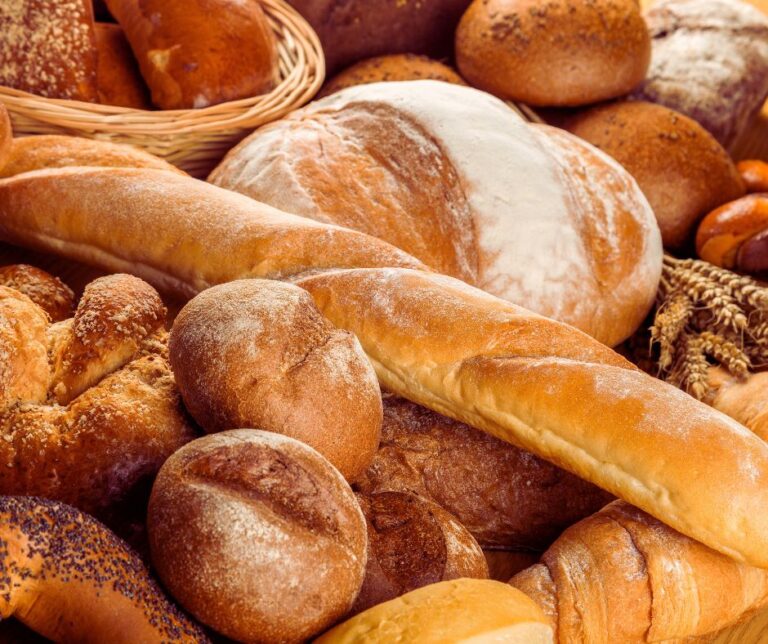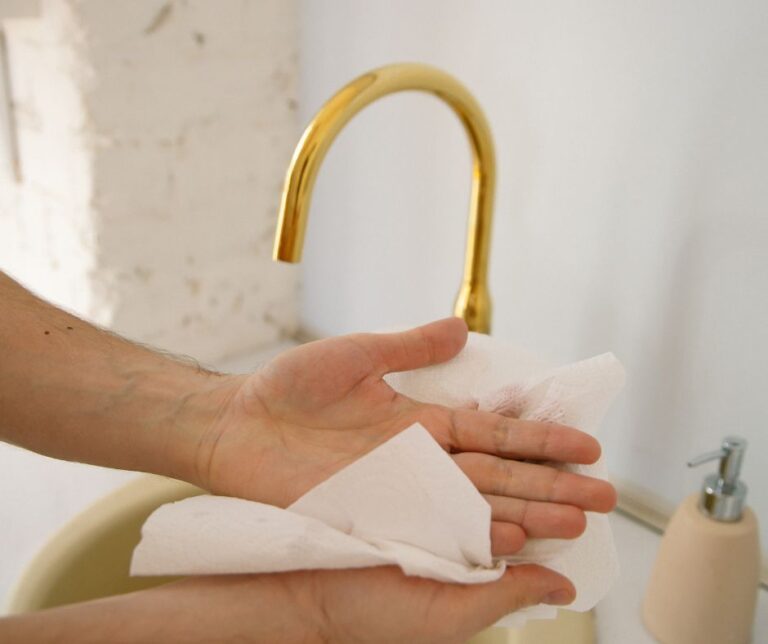Easy Compost in Kitchen Setup: Your Guide to Sustainable Food Waste Management
Interested in composting but unsure how to begin? Managing compost in kitchen is straightforward and sustainable, reducing landfill waste and providing rich soil for plants. Discover essential tools, daily maintenance tips, and solutions for space restrictions, ensuring your composting journey is successful.
Key Takeaways
Understanding Kitchen Composting
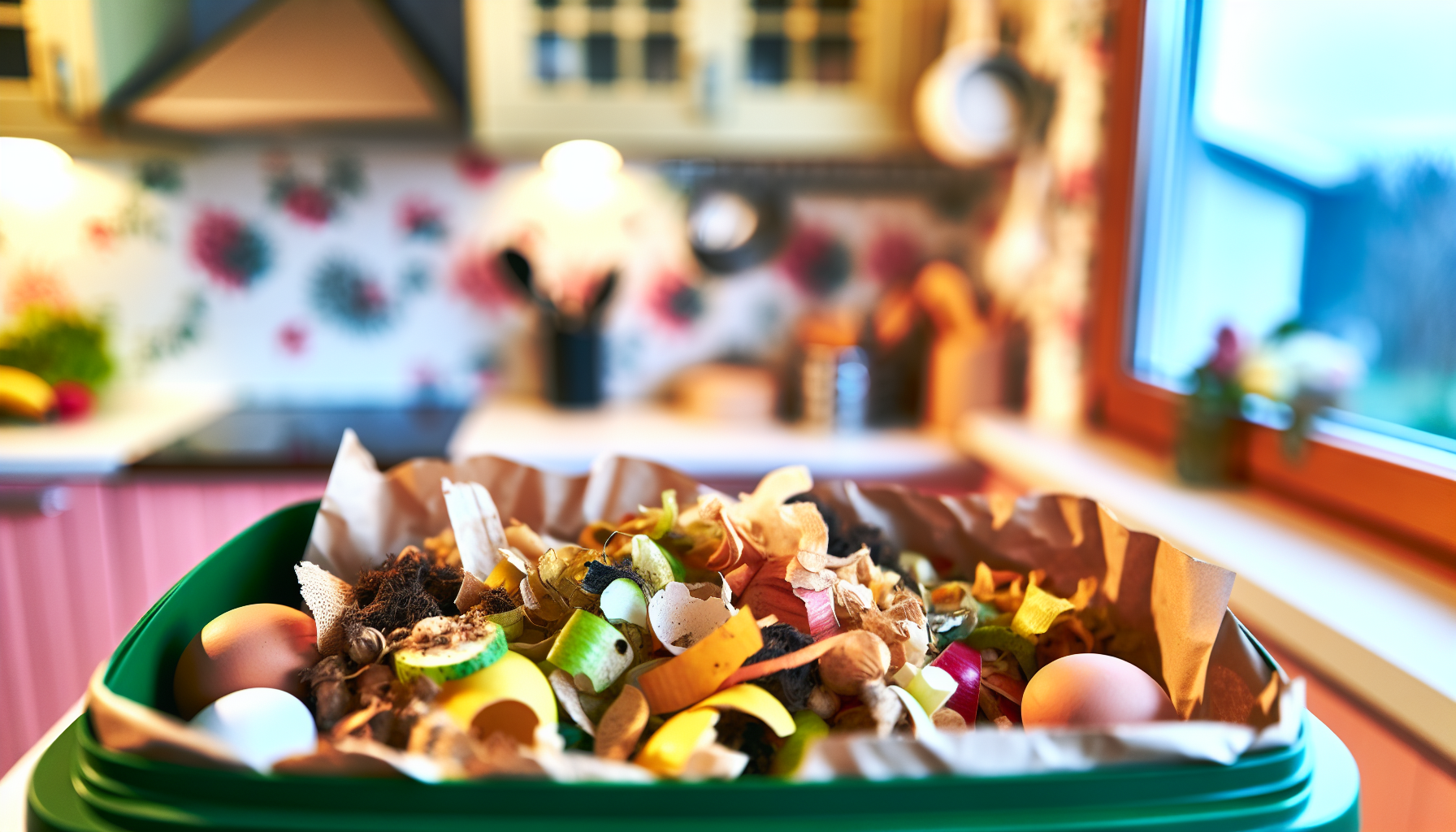
Collecting organic waste such as food scraps and decomposing them into compost is what kitchen composting entails. This straightforward task can easily blend into your daily routine. Composting not only minimizes the amount of material going to landfills but also mitigates the production of methane, a potent greenhouse gas, and helps in reducing food waste.
The composted material turns into a treasure for your garden. It improves soil structure, the soil amendment fosters healthier plant growth, and reduces the need for synthetic fertilizers and pesticides. Aren’t you excited to make your contribution to sustainable waste management?
Essential Tools for Indoor Composting
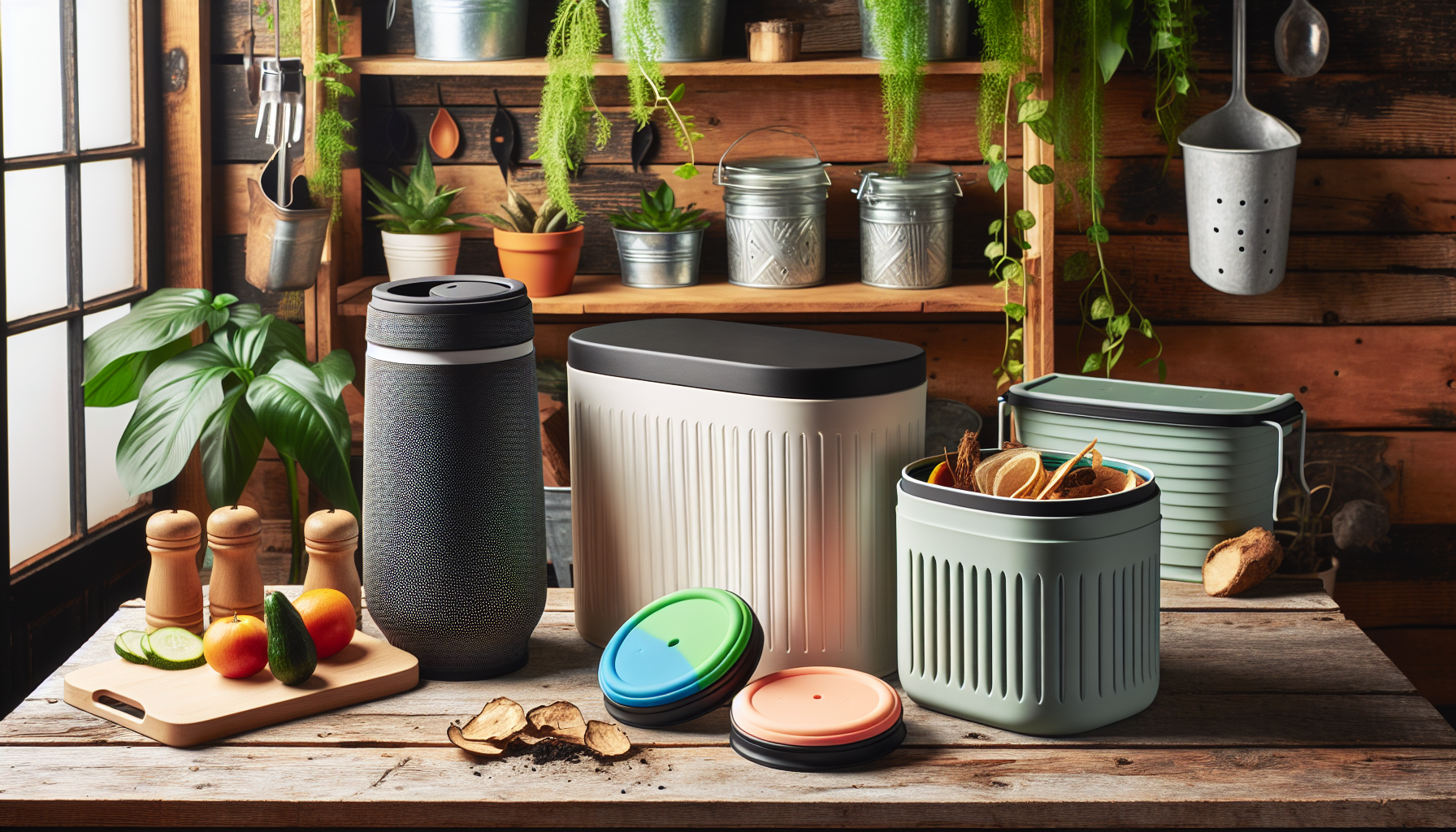
Indoor composting offers an efficient way to manage kitchen waste. You can use freezer-friendly silicone compost collectors, kitchen compost caddies with carbon filters, or even basic bins with tight lids and ventilation. Many modern home composters and bins feature aeration systems, easy-to-remove lids, and compatibility with biodegradable liners to simplify the composting process.
The magic weapon in this process is the activated charcoal carbon filter, which helps circulate air, trap odors, and ward off tiny intruders like fruit flies and worms. These filters are replaceable and typically last up to a year, depending on usage and compost bin emptying regularity.
Step-by-Step Guide to Composting Kitchen Waste
Starting a composting journey is not as daunting as it might seem. By following a few simple steps, you can transform your kitchen waste into valuable compost.
Choosing Your Bin
Choosing the right compost bin depends on several factors. The size should align with the volume of compostables your household produces. For a family of 1-4 people, a compost bin with a capacity of at least 4.5 cubic feet is generally sufficient.
Consider a bin with a carbon filter to minimize odors, especially if it will be placed on your countertop. While aesthetics might be a consideration, prioritize a compost bin’s functionality and long-term durability when making your choice.
What to Compost
Composting requires a balance of ‘greens’ and ‘browns’. Greens are nitrogen-rich materials like fruit and vegetable scraps, coffee grounds, and eggshells. To compost food scraps effectively, make sure to also include browns, which are carbon-rich materials like leaves and dirt.
However, not all kitchen waste is compost-friendly.
Avoid adding the following items to your kitchen counter or compost pile to prevent odors and pests:
Citrus peels should also be used in moderation due to their acidity.
Daily Maintenance
Daily attention is crucial for maintaining a healthy compost mix. It’s important to strike a balance between green kitchen scraps and brown materials such as dry leaves or even shredded newspaper or paper. An infestation of bugs in your compost bin could indicate a surplus of green materials; introducing more browns should rectify this issue.
Keeping the compost material moist, but not overly wet, facilitates the activity of composting microorganisms. Regularly emptying the indoor compost bin every 2-3 days helps avoid decomposition smells.
No Yard? No Problem: Composting Without Outdoor Space

Even if you live in an apartment or lack outdoor space, don’t let that dissuade you from composting. Numerous other community gardens and composting initiatives are open to accepting food scraps for composting. Programs like the Neighborhood Soil Rebuilders provide training to manage local composting projects, boosting local food production and composting knowledge.
For indoor composting, there are several efficient options to consider:
- Worm bins or vermiculture: These systems, such as stacking worm farm kits, offer space efficiency and continuous compost supply.
- Electric composters: These machines can handle various types of waste, including meat and bones.
- Bokashi bins: These bins use a fermentation process to break down organic waste.
These options provide convenient and effective ways to compost indoors.


Tackling Common Composting Challenges

Composting at home might come with a few challenges, but they can be easily managed. To control odor, consider the following tips:
- Avoid adding materials like meats and dairy that can create unpleasant smells.
- Consider using a compost caddy with a carbon filter to assist in odor control. This can help keep your kitchen smelling fresh while reducing waste.
- Regularly clean your compost bin to prevent buildup of odors.
- Use natural absorbents like newspaper to help control compost bin odors.
By following these tips, you can successfully manage odor in your kitchen waste composting and process.
The Science of Speed: How to Compost Faster
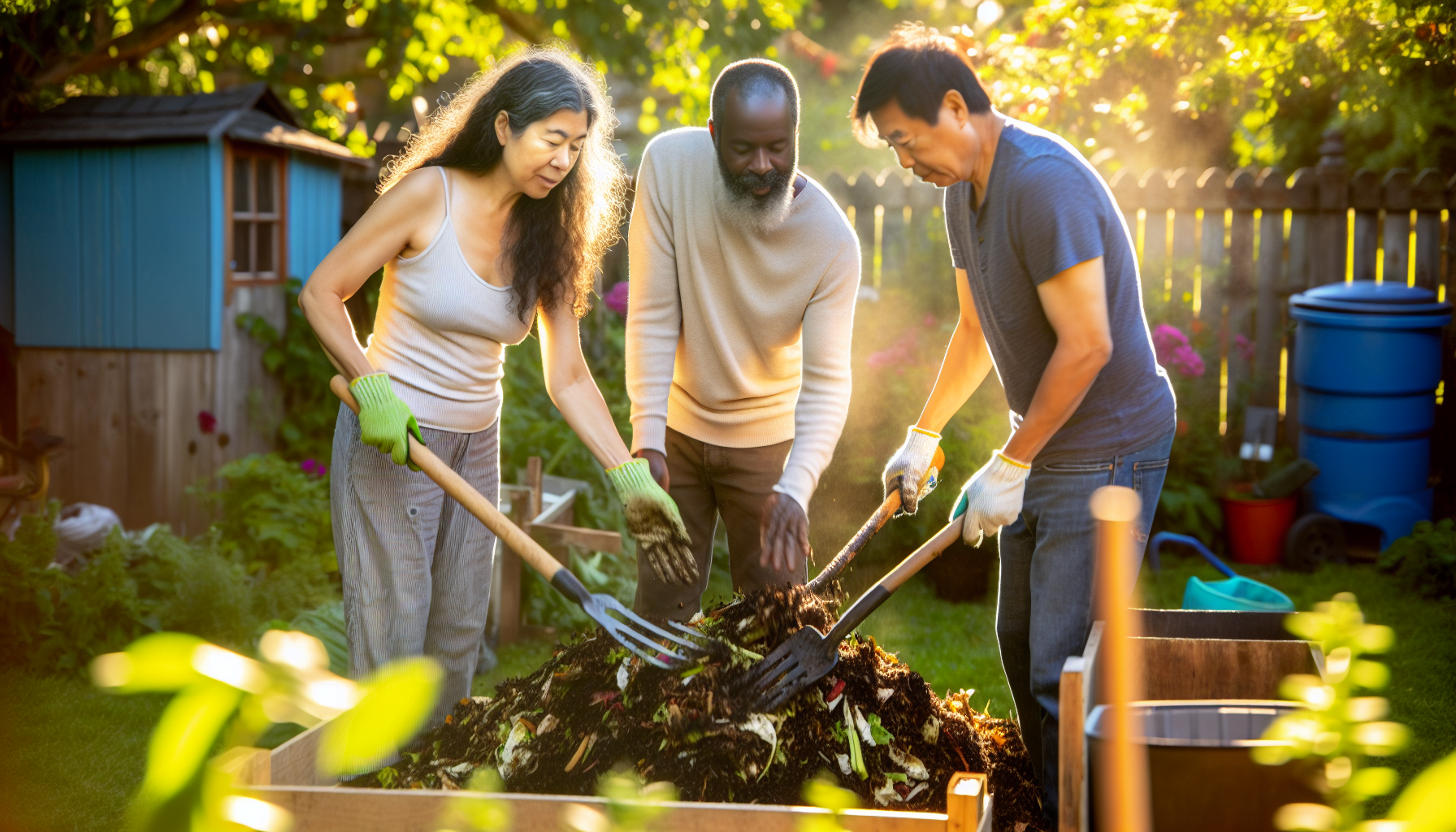
While composting is a process that demands patience, there are methods to hasten it. Regularly turning your compost pile encourages oxygen circulation, prevents moisture build-up, and evenly spreads heat – factors that all contribute to speeding up decomposition. Incorporating high-nitrogen materials, such as grass clippings and vegetable scraps, can boost the nitrogen content and speed up the composting process.
Shredded materials are easier to digest by the composting microorganisms, resulting in a quicker composting cycle. Using a compost tumbler, keeping the pile at an ideal volume, and introducing old compost into new compost piles can ensure faster composting.
From Scraps to Soil: Using Your Finished Compost

The product resulting from your composted kitchen waste is incredibly beneficial for your garden. Incorporating compost into vegetable gardens and planting beds enhances the soil’s water retention and aeration capabilities, and boosts the activity of nutrient-providing soil organisms.
If you’re into container gardening or have potted plants, you can use compost in the following ways:
- Mix your compost with vermiculite and topsoil to create a rich DIY potting soil mix.
- Combine your compost with potting soil and peat moss to create a nutrient-rich potting soil mix.
- Use compost as a topdressing for existing lawns to improve soil tilth and support healthy grass growth.
Compost is a versatile and beneficial addition to any garden, and using a compost container can help manage the process more efficiently, turning your organic waste into a valuable outdoor compost pile, which eventually becomes a compost heap.
The Environmental Benefits of Composting at Home
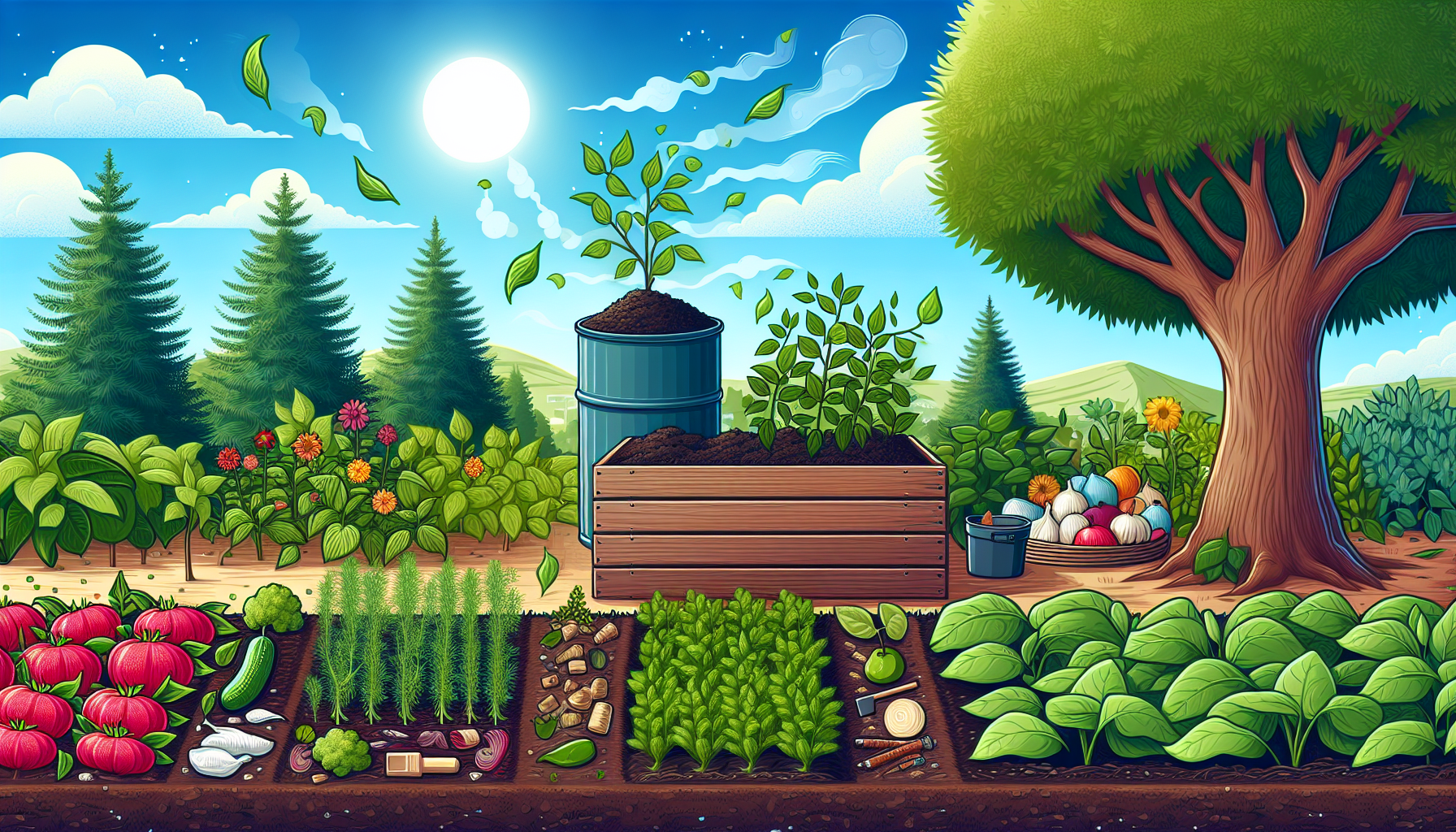
Home composting, despite being a small step, offers substantial environmental benefits. It helps divert organic waste from landfills, consequently reducing methane emissions – a potent greenhouse gas. This diversion of waste from landfills through composting at home results in lesser methane emissions from these sites.
Composting also enriches soil with organic matter, boosting the nutrient content, and bolstering soil biodiversity. This results in a more robust soil ecosystem. Furthermore, carbon sequestration in soil is a natural process facilitated by composting, helping to reduce greenhouse gas emissions into the atmosphere.
Summary
Composting kitchen waste is an easy, eco-friendly way to manage waste, reduce landfill contributions, and create nutrient-rich compost for gardens. It not only improves soil quality and supports healthy plant growth but also contributes to carbon sequestration. With the right tools and techniques, composting can become a seamless part of your daily routine, making a significant impact on your environmental footprint.


